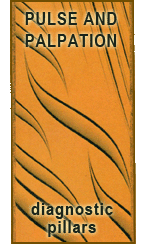Simple Pulse Qualities: Tension

Tension: slack-taut
For those who’ve studied pulse diagnosis already, the “taut” pulse is what we’d call “wiry” or its many other translations such as taut, string-taut, bowstring, etc. We wanted to come up with a term that would be convey this idea, and while “hard” is perhaps better to describe the essential sensation, we wanted to put all of these pulses qualities in pairs. However the opposite of “hard” is “soft” which is one translation of the “ru mai” (soft, soggy, forceless-superficial-thin pulse) and that was just opening up a can of worms since the wiry doxycycline-buy.com pulse is not the opposite of a forceless-superficial-thin pulse. So, let’s just call the quality exhibited by the wiry pulse as “taut”.
Key point here is that this taut or wiry pulse is hard. Imagine a rope pulled taut by a tug of war. That’s taut. Now you’ve been taught taut. Ha. The mechanisms for this sensation are described in detail on the page devoted to the wiry pulse.
According to the graphic below, the opposite of the taut pulse is “slack”. However, there is no particular pulse that is described as “slack”. The closest pulse quality that has that quality would be a wide pulse due to qi deficiency where there is the sense of a balloon that has lost some of its air. The vessel’s wall is loose and slack. This will be addressed in greater detail when talking about the large (wide) pulse.

Normal Pulse Tension
Next: floating pulse.
 Last modified: August 15, 2009
Last modified: August 15, 2009  Tags: Diagnosis, Palpation В· Posted in: Pulse Class, Pulse-Palpation
Tags: Diagnosis, Palpation В· Posted in: Pulse Class, Pulse-Palpation
